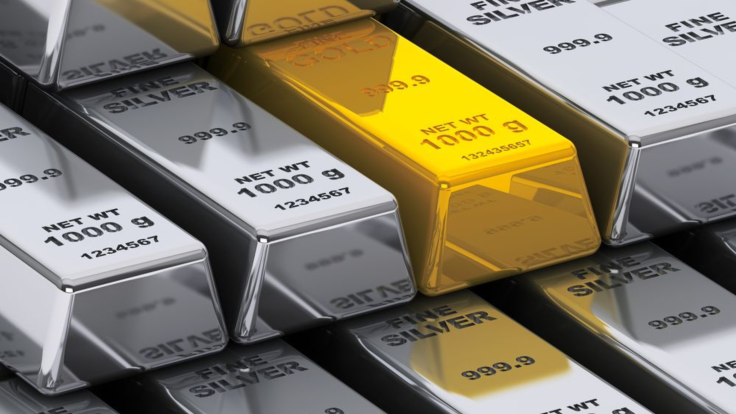Gold and Silver Wipeout: Was Today's Price Collapse an Inside Job by Bullion Banks?
Analysts are now asking if manipulation, margin calls, or profit-taking are behind the chaos

Gold's historic run came to an abrupt halt this week as prices tumbled in their worst single-day drop in over a decade. The sell-off shocked investors who had watched the yellow metal soar more than 60% this year, reaching record highs above $4,380 per ounce. But as panic spread through markets, whispers of foul play grew louder. Was this dramatic fall a natural correction, or could bullion banks have triggered it from behind the scenes?
A Sudden Plunge
On Tuesday, gold prices crashed as much as 6%, sliding from a record $4,381 (approximately £3,239) to as low as $4,000 (about £2,957) per ounce. Silver followed suit, sinking over 7%. The sell-off marked gold's steepest single-day decline since 2013, ending what traders had dubbed a 'golden year'.
Analysts blamed profit-taking, overbought conditions, and a stronger dollar for the sudden collapse. However, the timing raised eyebrows. The drop came just as margin requirements on the Shanghai Exchange were raised, triggering a wave of forced selling that rippled across global markets.
The Role of Bullion Banks
Rumours quickly spread that large bullion banks may have had a hand in the chaos. Critics argue that such institutions hold outsized influence in futures markets and could have taken advantage of overheated prices to trigger stop-loss cascades.
'It wouldn't be the first time big players tested the market's limits,' said one analyst. 'When volatility spikes, these banks can profit massively from sudden price reversals.'
While there is no confirmed evidence of manipulation, the scale and timing of the sell-off have led some traders to call for tighter regulation and greater transparency in metals trading.
Technical Overload or Tactical Attack?
Some experts insist the crash was purely technical. Gold had been on a relentless upward climb for months, fuelled by inflation fears, central bank buying, and geopolitical tension. Overbought signals had been flashing red for weeks.
'A pullback was overdue,' said Kiran Kowshik of Lombard Odier. 'The fundamentals haven't changed. What we're seeing is a market cooling off after a parabolic run.'
Others, however, suspect that the pullback's intensity suggests deliberate action. 'This was too sharp and too coordinated to be random,' one commodities strategist said.
Global Factors
The drop also coincided with easing trade tensions between the US and China, a rebound in the dollar, and speculation that interest rates may not fall as quickly as expected. These factors weakened gold's appeal as a hedge against economic uncertainty.
President Donald Trump's remark that his meeting with Chinese President Xi Jinping might be delayed also shook investor sentiment, sending mixed signals to already jittery markets.
Meanwhile, gold miners suffered heavy losses. Northern Star Resources in Sydney fell more than 8%, while Shandong Gold Mining and Zijin International both declined in Hong Kong trading.
Long-Term Strength Still Intact
Despite the chaos, analysts say gold's long-term outlook remains strong. Central banks continue to buy aggressively, seeing gold as a safer alternative to US Treasurys amid record government debt.
'Gold remains a store of value,' noted analyst Luca Bindelli. 'While volatility may persist, the underlying demand from institutions and investors is not going away.'
Silver, too, may benefit once the dust settles. With industrial demand rising and supply tightening, many believe this week's crash could be a temporary setback rather than the start of a long decline.
What About the Altcoins?
Interestingly, as gold and silver faltered, some investors shifted focus toward digital assets. Bitcoin's recent rally has rekindled interest in altcoins, suggesting that part of the capital leaving precious metals might be flowing into crypto.
While gold and silver face short-term turbulence, the broader flight to alternative stores of value remains alive. Whether through bars or blockchains, the hunt for protection against inflation continues — and the next big move could come from the digital frontier.
© Copyright IBTimes 2025. All rights reserved.





















